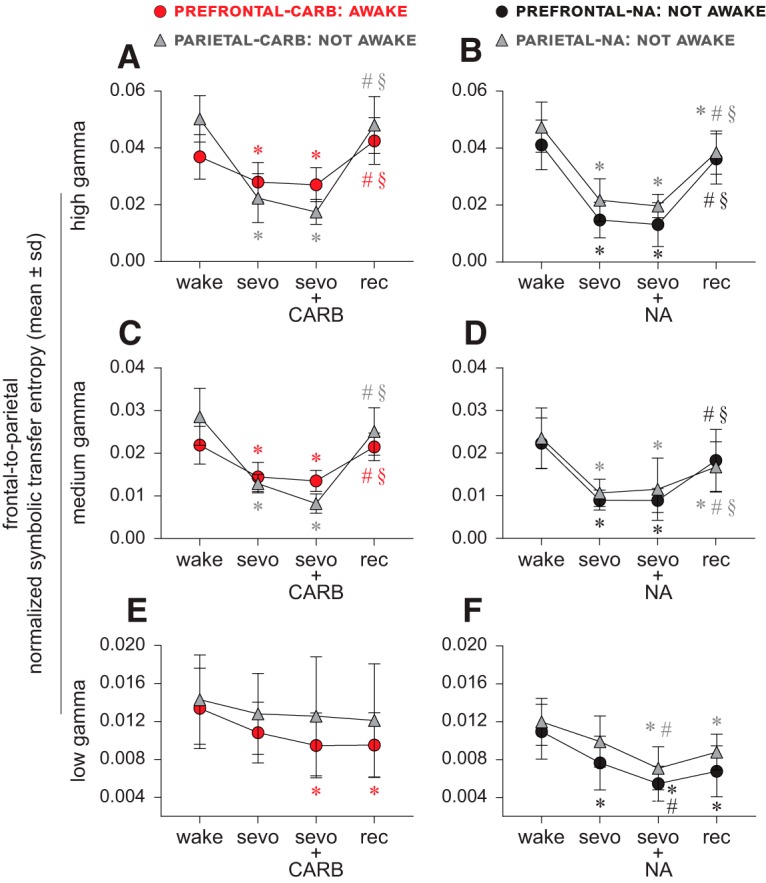Figure 3.

Frontal-to-parietal directed gamma connectivity does not correlate with level of consciousness. A–D, Frontal-to-parietal connectivity in the high (125–155 Hz) and medium (85–125 Hz) gamma bands was significantly reduced during sevoflurane anesthesia (sevo). Neither the restoration of wakefulness through 5 mm carbachol (CARB) delivery to PFC nor the absence of wakefulness after CARB delivery to parietal cortex or 20 mm NA delivery to prefrontal and parietal cortices, as reported previously (Pal et al., 2018), had any significant effect on the high and medium gamma frontal-to-parietal connectivity, which remained disrupted and was not significantly different from that observed during sevoflurane anesthesia alone (A–D). The frontal-to-parietal connectivity during the post-sevoflurane recovery wake epoch (rec) returned to baseline wake levels (wake) for high and medium gamma bands for all conditions, except in the parietal cortex-NA group (B,D), where it remained significantly lower compared with wake. The connectivity changes in low gamma bandwidth were highly variable between groups (E,F). A linear mixed model with random intercept for each rat was used for the statistical comparisons, and the post hoc pairwise tests were single-step corrected for multiple comparisons. The statistical comparisons are shown at p < 0.05. The mean, SD, exact p values, F statistics, and the effect sizes for each statistical comparison are provided in Tables 3 and 5. The significance symbols are color-coded to match the line-symbol plots. *Significant compared with wake. #Significant compared with sevo. §Significant compared with CARB or NA during sevo.
